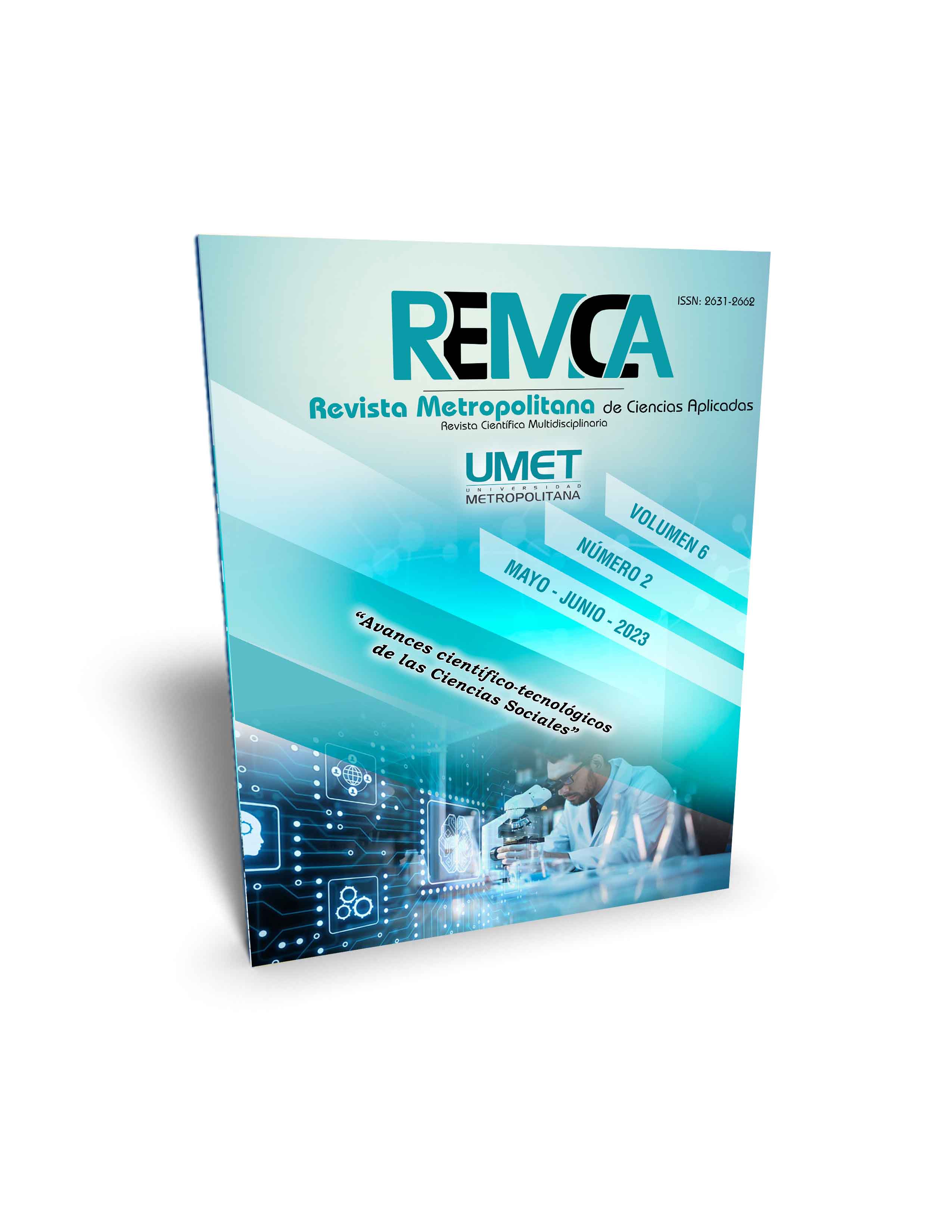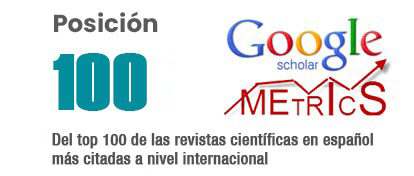Review of the scientific literature related to economic-financial prediction in banana Smes
DOI:
https://doi.org/10.62452/kyfcmm50Keywords:
Bibliometric analysis, prediction, articlesAbstract
The review of the scientific literature in a certain area is an indicator of the increase in research and the generation of knowledge. The bibliometric analysis allows a retrospective examination of the way in which the subject has been investigated and made known, but also assesses the potential in the knowledge of the most relevant publications. The objective of this article is to evaluate the scientific literature related to economic-financial prediction based on the study of trends and the state of research in banana SMEs. For this, a descriptive cross-sectional study was developed that included the analysis of the articles published in SciVerse Scopus, SciELO between the years 2002-2022, the information was tabulated using the VOSviwer software. An advanced search was carried out using the TAK model (Title, Abstract, Keywords) and the search string in English was used (Financial, Economic, Predictive, Modeling, Analysis and Agricultural) that were present in the titles, abstract or keywords. defined by the author. The inquiry reflected the growth of publications, which shows the academic development of the subject and, at the same time, the interest of researchers.
Downloads
References
Bandusena, M., Chandrasekera, B., & Edirisinghe, E. (2020). Development of cryopreservation protocol for banana cultivar 'Ambul' (Musa sp.) using vitrification technique. Acta Hortic. 1285, 153-160.
Biney, J. K. M., Vašát, R., Bell, S. M., Kebonye, N. M., Klement, A., John, K., & Borůvka, L. (2022). Prediction of topsoil organic carbon content with Sentinel-2 imagery and spectroscopic measurements under different conditions using an ensemble model approach with multiple pre-treatment combinations. Soil and Tillage Research, 220.
Caicedo Solano, N. E., García Llinás, G. A., & Montoya-Torres, J. R. (2022). Operational model for minimizing costs in agricultural production systems. Computers and Electronics in Agriculture, 197(5).
Calou, V. B. C., dos Santos Teixeira, A., Moreira, L. C. J., Lima, C. S., de Oliveira, J. B., & de Oliveira, M. R. R. (2020). The use of UAVs in monitoring yellow sigatoka in banana. biosystems engineering, 193, 115-125.
Chao, Z., Xiaofei, Y., Kexing, L., & Yongxiang, H. (2021). Effects of potassium application and straw returning on potassium management and benefit of banana. Transactions of the ASABE, 64(5), 1511-1518.
Chen, X., & Du, C. (2021). Advances in research on the phytohormone regulating interactions between plants and Fusarium oxysporum. Chinese Journal of Applied and Environmental Biology, 27(3), 816-822.
Costa, C., Zhang, Y., Howatt, K., Ram, B., Stenger, J., Nowatzki, J., Bajwa, S., & Sun, X. (2022). Palmer amaranth (Amaranthus Palmeri S. Watson) And Soybean (Glycine Max L.) Classification in greenhouse using hyperspectral imaging and chemometrics methods. Journal of the ASABE, 65(1), 179-188.
Diez, F. J., Correa-Guimaraes, A., Chico-Santamarta, L., Martínez-Rodríguez, A., Murcia-Velasco, D. A., Andara, R., & Navas-Gracia, L. M. (2022). Prediction of Daily Ambient Temperature and Its Hourly Estimation Using Artificial Neural Networks in an Agrometeorological Station in Castile and León, Spain. Sensors, 22(13).
Efremova, N., Seddik, M. E. A., & Erten, E. (2022). Soil Moisture Estimation Using Sentinel-1/-2 Imagery Coupled with CycleGAN for Time-Series Gap Filing. IEEE Transactions on Geoscience and Remote Sensing, 60.
Gupta, P., Bharadwaj, S., Singh, A., & Saini, D. K. (2023). Predictive Model for Agriculture Using Markov Model (Vol. 421). Springer Science and Business Media Deutschland GmbH.
Hanadé Houmma, I., El Mansouri, L., Gadal, S., Garba, M., & Hadria, R. (2022). Modelling agricultural drought: A review of latest advances in big data technologies. Geomatics, Natural Hazards and Risk, 13(1), 2737-2776.
He, S., Wu, J., Wang, D., & He, X. (2022). Predictive modeling of groundwater nitrate pollution and evaluating its main impact factors using random forest. Chemosphere, 290.
Huang, J., Wang, D., Li, H., Tang, Y., Ma, X., Tang, H., Lin, M., & Liu, Z. (2022). Antifungal activity of an artificial peptide aptamer SNP-D4 against Fusarium oxysporum. PeerJ, 10.
Iqbal, B., & Ali, M. (2022). Estimation of spatio-temporal air temperature from satellite based LST under semi-arid to arid environment in Peshawar Basin, Northwest Pakistan. Advances in Space Research, 70(4), 961-975.
Jamei, M., Karbasi, M., Alawi, O. A., Kamar, H. M., Khedher, K. M., Abba, S. I., & Yaseen, Z. M. (2022). Earth skin temperature long-term prediction using novel extended Kalman filter integrated with Artificial Intelligence models and information gain feature selection. Sustainable Computing: Informatics and Systems, 35.
Kabirigi, M., Sekabira, H., Sun, Z., & Hermans, F. (2022). The use of mobile phones and the heterogeneity of banana farmers in Rwanda. Environment, Development and Sustainability, 25(11).
Kassem, Y., Gökçekuş, H., & Alassi, E. (2022). Identifying most influencing input parameters for predicting Cereal production using an artificial neural network model. Modeling Earth Systems and Environment, 8(1), 1157-1170.
Kussul, N., Shelestov, A., Yailymova, H., Shumilo, L., & Drozd, S. (2022). Agriculture Land Appraisal with Use of Remote Sensing and Infrastructure Data. (POnencia). International Geoscience and Remote Sensing Symposium. Kuala, Malasya.
Lamour, J., Le Moguédec, G., Naud, O., Lechaudel, M., Taylor, J., & Tisseyre, B. (2021). Evaluating the drivers of banana flowering cycle duration using a stochastic model and on farm production data. Precision Agriculture, 22(3), 873-896.
Luyckx, M., & Reins, L. (2022). The Future of Farming: The (Non)-Sense of Big Data Predictive Tools for Sustainable EU Agriculture. Sustainability (Switzerland), 14(20).
Ma, W., Zheng, H., & Yuan, P. (2022). Impacts of cooperative membership on banana yield and risk exposure: Insights from China. Journal of Agricultural Economics, 73(2), 564-579.
Magallanes-Quintanar, R., Galván-Tejada, C. E., Galván-Tejada, J. I., Méndez-Gallegos, S. D. J., García-Domínguez, A., & Gamboa-Rosales, H. (2022). Narx Neural Networks Models for Prediction of Standardized Precipitation Index in Central Mexico. Atmosphere, 13(8).
Maino, A., Alberi, M., Anceschi, E., Chiarelli, E., Cicala, L., Colonna, T., De Cesare, M., Guastaldi, E., Lopane, N., Mantovani, F., Marcialis, M., Martini, N., Montuschi, M., Piccioli, S., Raptis, K. G. C., Russo, A., Semenza, F., & Strati, V. (2022). Airborne Radiometric Surveys and Machine Learning Algorithms for Revealing Soil Texture. Remote Sensing, 14(15).
Malerba, M. E., Wright, N., & Macreadie, P. I. (2022). Australian farm dams are becoming less reliable water sources under climate change. Science of the Total Environment, 829.
Martinsen, K. T., & Sand-Jensen, K. (2022). Predicting water quality from geospatial lake, catchment, and buffer zone characteristics in temperate lowland lakes. Science of the Total Environment, 851.
Mathew, D., Kumar, C. S., & Cherian, K. A. (2021). Application of discrete orthonormal Stockwell transform and local neighborhood patterns for leaf disease classification in banana. (Ponencia). International Conference on Communication, Control and Information Sciences. Chongqing, China.
Pesqualoto Canellas, L., Lopes Olivares, F., Canellas, N., Jindo, K., castro Carrielo Rosa, R., & Piccolo, A. (2022). Challenge of transition: The history of a case study involving tropical fruits polyculture stimulated by humic acids and plant-growth promoting bacteria. Chemical and Biological Technologies in Agriculture, 9(1).
Silva-Pérez, C., Marino, A., & Cameron, I. (2022). Learning-based tracking of crop biophysical variables and key dates estimation from fusion of SAR and optical data. IEEE Journal of Selected Topics in Applied Earth Observations and Remote Sensing, 15, 7444-7457.
Yang, Q., Zhu, Y., & Wang, F. (2021). Exploring mediating factors between agricultural training and farmers’ adoption of drip fertigation system: Evidence from banana farmers in China. Water (Switzerland), 13(10).
Zhang, D., Wang, P., Cui, R., Yang, H., Li, G., Chen, A., & Wang, H. (2022). Electrical conductivity and dissolved oxygen as predictors of nitrate concentrations in shallow groundwater in Erhai Lake region. Science of the Total Environment, 802.
Downloads
Published
Issue
Section
License
Copyright (c) 2023 Patricia Eugenia Álvarez-Perdomo, Michel Tamayo-Saborit, José Luís Govea-Vilcacundo (Autor/a)

This work is licensed under a Creative Commons Attribution-NonCommercial-ShareAlike 4.0 International License.
Authors who publish in Revista Metropolitana de Ciencias Aplicadas (REMCA), agree to the following terms:
1. Copyright
Authors retain unrestricted copyright to their work. Authors grant the journal the right of first publication. To this end, they assign the journal non-exclusive exploitation rights (reproduction, distribution, public communication, and transformation). Authors may enter into additional agreements for the non-exclusive distribution of the version of the work published in the journal, provided that acknowledgment of its initial publication in this journal is given.
© The authors.
2. License
The articles are published in the journal under the Creative Commons Attribution-NonCommercial-ShareAlike 4.0 International License (CC BY-NC-SA 4.0). The terms can be found at: https://creativecommons.org/licenses/by-nc-sa/4.0/deed.en
This license allows:
- Sharing: Copying and redistributing the material in any medium or format.
- Adapting: Remixing, transforming, and building upon the material.
Under the following terms:
- Attribution: You must give appropriate credit, provide a link to the license, and indicate if any changes were made. You may do this in any reasonable manner, but not in any way that suggests the licensor endorses or sponsors your use.
- NonCommercial: You may not use the material for commercial purposes.
- ShareAlike: If you remix, transform, or build upon the material, you must distribute your creation under the same license as the original work.
There are no additional restrictions. You may not apply legal terms or technological measures that legally restrict others from doing anything the license permits.




